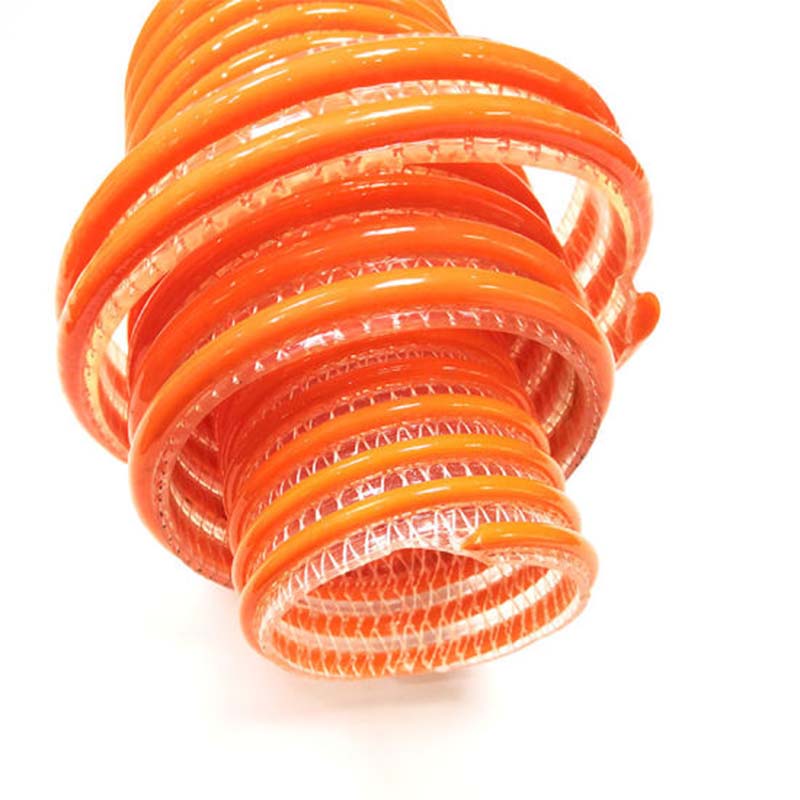oxy acetylene hose
Understanding Oxy-Acetylene Hose An Essential Component for Welding
Oxy-acetylene welding, a process that has revolutionized metalworking and fabrication, relies on a combination of oxygen and acetylene gases to produce a high-temperature flame capable of melting and joining metals. A critical aspect of this process is the equipment used to safely transport these gases, notably the oxy-acetylene hose. Understanding the characteristics, construction, and maintenance of this essential tool is vital for anyone involved in welding or similar applications.
Construction and Specifications
Oxy-acetylene hoses are designed to withstand the high pressure and temperature conditions that arise during welding tasks. Typically available in two distinct colors, the hoses are differentiated by their function the red hose is used for acetylene, while the green hose is designated for oxygen. This color-coding is crucial for safety, ensuring that operators can quickly identify which hose carries which gas.
The hoses are usually made from layers of rubber and reinforced with synthetic fibers to provide durability and flexibility. The internal structure is designed to prevent the permeation of gases and to withstand the corrosive effects that can arise from exposure to the gases being transported. Most hoses follow specifications set by organizations such as the Compressed Gas Association (CGA) and the American National Standards Institute (ANSI), ensuring they meet industry safety standards.
Safety Considerations
Safety is paramount when dealing with oxy-acetylene hoses. The flammable nature of acetylene and the highly reactive properties of oxygen necessitate stringent safety measures. A common risk when using these hoses is leakage, which can lead to dangerous situations, including fires or explosions. Regular inspections of hoses for signs of wear, such as cracks, fraying, or discoloration, are essential. Any damaged hose should be replaced immediately to avoid hazardous incidents.
Users should also take care to keep hoses free of kinks and tangles, as these can restrict gas flow and increase the risk of rupture. Additionally, hoses should be stored properly, away from extreme temperatures or direct sunlight, as UV exposure can degrade the material, leading to failure.
oxy acetylene hose

Proper Use and Maintenance
When setting up an oxy-acetylene welding station, it's vital to ensure that the connections between the regulators, hoses, and torches are secure and leak-free. This can be tested using a soap solution; if bubbles form, it indicates a leak that must be addressed before proceeding. When working, operators should continuously monitor for gas leaks and be aware of their surroundings to prevent accidental ignition sources nearby.
Maintenance of oxy-acetylene hoses involves not only regular inspections but also cleaning and safe storage practices. Hoses should be coiled loosely and protected from potential damage when not in use. It's also advisable to keep hoses away from any sharp edges or heavy objects that could cause abrasions or tears.
Regulatory Standards
Adhering to industry standards and regulations is crucial for ensuring safety during oxy-acetylene operations. Organizations like OSHA (Occupational Safety and Health Administration) and local fire codes provide guidelines on the safe use, storage, and transportation of flammable gases, including acetylene and oxygen. Understanding these regulations not only protects the welder but also enhances overall workplace safety.
Conclusion
In conclusion, the oxy-acetylene hose is an indispensable component in the realm of metal fabrication and welding. By understanding its construction, ensuring safety, and adhering to proper maintenance practices, users can enhance their welding operations while mitigating risks. As technology continues to evolve, so too might the materials and methods used in creating these hoses, but the basic principles of safety and effective operation will remain integral to their use. By prioritizing these factors, welders can ensure that they work effectively and safely in their craft, contributing to high-quality outcomes in their projects.
-
Unrivaled Performance and Applications of PU Pneumatic Hoses and TubesNewsJun.11,2025
-
The Transparent World of Industrial Tubing and Hosing SolutionsNewsJun.11,2025
-
The Intricate World of Pneumatic Conduits: Tubes and HosesNewsJun.11,2025
-
The Dynamic Landscape of Pneumatic Conduits: Unraveling Key ComponentsNewsJun.11,2025
-
The Diverse Applications and Significance of Transparent PVC TubingNewsJun.11,2025
-
High - Pressure Pneumatic Tubing and Systems: An In - Depth LookNewsJun.11,2025














